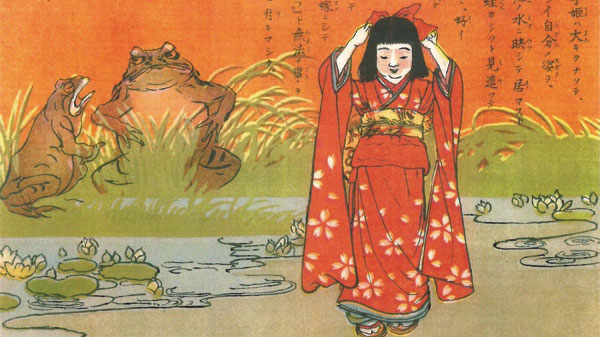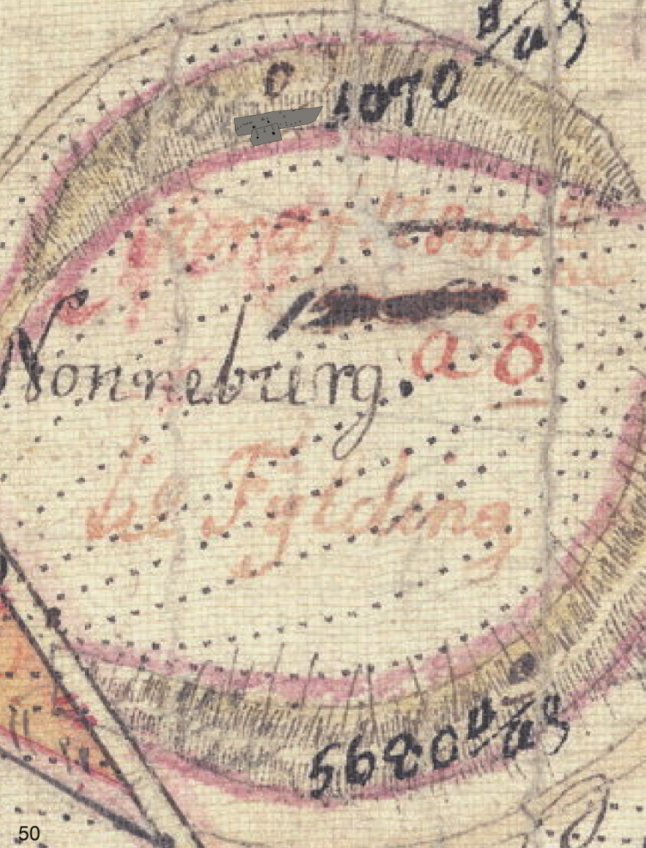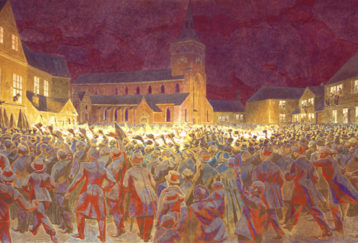
Andersen’s children’s tales are widely known in Japan to readers of all ages. Counting only children’s books and illustrated books, his works are as widely published as those of the Brothers Grimm. Commemorating 200 years of his birth in 2005, many events were held and special editions of his books were published. Such is the popularity of Andersen’s works. His work was first introduced to Japan in 1886, the era called Meiji in Japan. The Meiji was an era of great upheaval in Japanese modern history and some confusion can be observed in the way that Andersen’s tales, which arrived in Japan at this time, were accepted. I use the word ‘confusion’ here, but it was not of a negative nature but as a result of the process of trial and error in an effort to take in and establish Andersen’s tales in Japan as the new foreign culture.
This paper discusses the acceptance of Andersen’s tales at the confusing time of the Meiji era using the illustrations of ‘Thumbelina’.

There were 2 major eras in which the society and the consciousness of the people drastically changed in the modern history of Japan. The last one is called the ‘post war period’ after the second world war. Before the war, Japan was the divine land, the emperor the God and the people were to fight to protect these values. In that society the priority would be placed on ‘the emperor’, ‘Japan’ and ‘the state’, while ‘the people’ and ‘the individual’ came second. This social system changed drastically after the war; it became a democracy, the emperor became a human being, and the people became the main subject of the nation. Such a change in society and a reversal of values were confusing and baffling for the consciousness of the people.
However such a major change had occurred once before, during the period called the Meiji era (1868-1912). Before that, in the Edo era, Japan had been in self-imposed isolation (Sakoku), where there was no trade or communication with most of the foreign countries. Making itself an isolated island, Japan during the Edo period rarely had contact with or received stimulus from foreign cultures. During this period, which lasted more than 200 years, Japan created a unique and rich culture.
With the arrival of Commodore Perry in 1854 and the subsequent opening of the country, Japan started to communicate with foreign countries again. Being without contact with foreign countries for such a long time, the decision whether or not to open the country caused huge upheaval, and with that the social system and consciousness of the people started to change. Many cultural influences started flooding into Japanese society and they stimulated the people’s awareness. Along with the newly established modernization movement, the society as a whole experienced the swell of ‘westernization’. The modernization and westernization movement changed Japan in all fields including politics, economy, society and education. The Meiji era, when Japan as a whole started its transformation, was also an era of trial and error, wondering how to respond and amalgamate these drastic changes.
Andersen’s children’s tales were introduced to Japan in the Meiji era when Japan was experiencing rapid change. The first to be introduced was the Den Lille Pige Med Svovlstikkerne (The Little Match Girl) which was included in the English textbook ‘New National Third Reader’ in 1886, 19 years after the new era had started. Following that, his works started to appear not only as teaching materials in English language texts, but also in literary magazines for grown-up readers, Christian newspapers, children’s magazines in Japanese language, though the translations didn’t exactly reflect the originals. To understand and accept a foreign culture which was so widely different from their own and to make them more easily understood and accepted by the readers, it was thought necessary to modify the stories. It was the challenge of the time: how to accept and merge unfamiliar foreign cultures into Japan, and as a result of such efforts, Keiserens nye Kinder (The Emperor’s New Clothes) was adapted for Kyogen, a form of Japanese traditional theater, under the name of ‘Koromo Daimyou’.
With these varied attempts, Andersen’s tales were gaining acceptance among both children and adults in Japan. After the centenary of his birth in 1905, seven anthologies of his work were published. These were to be known not by the title of each story, but as ‘Andersen’s Tales’ with emphasize on his name, which helped greatly to make him famous in Japan.
What was his best known tale during the Meiji period in Japan? Researching through the publications both in books and magazines, it was found that 72 of his 156 tales were published in the Meiji period. Most frequently found was the Keiserens nye Klæder, then Den Lille Pige Med Svovlstikkerne, Lille Claus og store Claus (Little Claus and Big Claus), Den grimme ælling (The Ugly Duckling), Gaaseurten (The Daisy) following in that order. These works appeared not only in magazines for adults but also in books and magazines for children. Naturally, it was adults who wanted to take in foreign culture through Andersen’s tales, but his works were also chosen to represent the new culture which the adults wanted to provide to their children as an example of the new era. Not only were Andersen’s tales chosen by grown-ups hoping genuinely to provide the taste of new culture to their children, but we cannot overlook the fact that there was a strong connection with the newly introduced education system at that time. As stated above, Japan received foreign influences in many fields, including the way the adults saw their children. The modern perception of children started to prevail along with the introduction of the schooling system. The emergence of schools brought about a new way of educating children and Andersen’s tales were considered to be useful for children’s education based on this modern perception. In fact some of the publications had the term ‘educational’ attached to the titles, suggesting his tales were part of a child’s education, even considered ‘educational materials’. Gaining both adults and children as readers from the very early stage of its acceptance was the major factor in establishing Andersen’s tales in Japan. Further, the linkage with the newly established education system influenced the way his tales took root in Japan. With the linkage with schools and the new education system, the perception of Andersen’s tales as ‘children’s educational material’ gradually began to take hold. By the time of the next Taisho era, along with many other activities for children’s education, Andersen’s tales had became firmly and clearly linked with children and education, thus the era of ‘Andersen’s tales for children’ had begun.
Today his tales have established an unshakable status in Japan. Grown ups who cherished his tales when they were young pass them to their children. Even though Andersen’s tales were originally used in education, they nevertheless became the most familiar children’s tales in Japan, having been passed down through the generations, always gaining acceptance.
Tommelise (Thumbelina) is the most popular Andersen’s illustrated children’ book in Japan now and even in the Meiji era there were already many translations. The biggest difference between Tommelise and Andersen’s other tales is that the former was intended only for child readers. As stated above, Andersen’s tales were intended for both children and adults in the Meiji era, and Tommelise was the only exception, being intended clearly for children from the very beginning. The reason seems to be not only that the protagonist of the story is a ‘little girl’ which makes it easy for the child readers to identify with it, but had also something to do with the images created by the translation of its title into Japanese. The translated title includes the word ‘Hime’ meaning ‘princess’ in modern Japanese, and was not part of the original Danish title. In the Meiji era, the word ‘Hime’ was used to honor ladies. As time went by, the connotation of ‘nobleness’ was added, and the word ‘Hime’ began to be used to denote a noble lady. With the word ‘Hime’ in the title, the image the Japanese readers will have would be quite different from the original’s.
Since the Meiji era was a period during which a great variety of attempts were made in order to merge newly imported foreign cultures into Japanese forms, many traces of their efforts can be seen.
Here I will use 2 examples, mainly for their illustrations, to show these efforts; the first one was ‘Shin Taketori Monogatari ‘(New wood cutter’s tale) which was serialized in a magazine ‘Shonen Sekai’ (Boys’ World) in 1895 and the second was ‘Hanako Hime no Ohanashi (The tale of Princess Hanako) published in 1908. The first was an adaptation of the original and the second one was the Japanese version of Tommelise with new interpretation added. Let’s start with the ‘Shin Taketori Monogatari’. The title obviously contains a reference to the familiar traditional tale of the ‘Taketori Monogatari’, suggesting an effort to make the new Andersen’s tale more familiar to Japanese readers. It has the subtitle of ‘Yubiko Hime’ (Little finger princess) using the word ‘Hime’. The story is almost the same as the original but the props and details were replaced with something more Japanese.







Let’s look at the illustrations: The heroine was born in a flower of ‘rice’ -Japanese staple food, wearing Kimono (see picture 1). The frog, which captured the heroine, wears a Tenugui, an equivalent of a towel, on its head (see picture 2). The heroine had short hair when she was born, but acquired a traditional hair-do and began to wear Kimono with long sleeves as she grew up (see picture 3). These are good representations of a girl of that time. The spider who makes the wedding dress for her marriage to the mole works on a ‘weaving instrument’ which was the type used in Japan (see picture 4). After escaping from the mole on a sparrow (see picture 5), the heroine gets married to the king of the flower fairies, and they were depicted sitting in a flower in Japanese wedding dress (see picture 6). The heroine wears a cloth over her head, the traditional headgear for a bride in Japan. In short, the wedding is illustrated as a fully Japanese one. Along with its title ‘Shin Taketori Mono-gatari’, almost all the scenes are based in Japan, the only exception being the influence of foreign culture through the mole (see picture 7). He was depicted as a symbol of foreign culture with entirely western appearance including a hat, western clothes and a walking stick. The storyline and the illustrations show ‘a heroine escaping from the proposal of the mole with western clothing and marrying a king who belongs to her own culture wearing Japanese clothing’ seems to show the confused emotions of Japanese people who encounter foreign culture.
The second one ‘Hanako Hime no Ohanashi’ (The tale of Princess Hanako) was published in the later years in the Meiji period, 13 years after the ‘Shin Taketori Monogatari’. As with the ‘Shin Taketori Monogatari’, it has the word ‘Hime’ in its title. It is primarily a picture book with very short text and has a subtitle ‘Educational picture book’. Though based on Tommelise, quite big alterations in the storyline were made. The biggest of all was that the king did not appear in the story at all but the heroine became the queen by herself. Let’s follow the story with the illustrations. The first picture shows a woman in western clothes and a young girl in Japanese clothes with a text reading as ‘A girl was born from a flower in Flower land’ (see picture 8). As the girl grows up she changes her hairstyle as well as her clothing (see picture 9). She is kidnapped by the frog and helped by the fishes as in the original but is later kidnapped again by a mouse and taken to the palace of the mole king underground (see picture 10). The mole king made the spider weave a cloth for the wedding (see picture 11). Hating the idea of marrying the mole, the heroine asked her friend the sparrow for help (see picture 12). Returning to the flower land with the help of the sparrow, the heroine became the queen of the land upon the insistence of every one there (see picture 13).






Looking only at illustrations, there are similarities with the ‘Shin Taketori Monogatari’, where the heroine wears Japanese clothes and the frog and the mouse are without clothing. However it has a definitely different ending from the above as well as the original, in that the heroine became the queen of the flower land by herself without marrying at all.
Since this book is focused on its illustrations, every page has its main character/event named in the Roman alphabet. For example, ‘HANAKOHIME’ (Princess Hanako) in picture 8 and ‘KAHERU’ (the frog) in picture 9. The last scene in picture 13 has a word ‘SHIYUSSE’ (advancement). This last keyword summarized the ethos of this story based on the new interpretation of Tommelise. In short this is a story of the social advancement of a girl called Hanakohime. In those days when feudal thinking still prevailed, the time when females were supposed to ‘serve parents when young, serve husband when married, and serve her own children in old age’, women’s social participation, let alone social advancement, was unthinkable. Against that background, though it was in a story, using the word ‘Advancement’ was rather progressive. Looking back through the history of the translations of Tommelise, this version is unique; there are no other translations following this ‘Hanako Hime no Ohanashi’.
The Meiji was an era of huge transitions, as great as those following the second world war. There must have been considerable confusion in peoples’ minds over accepting new foreign cultures. The impact can be felt from Tommelise which was introduced to Japan at that time. How to keep its own culture while accepting the inspiration provided by the foreign one, and merge them together? The two translation works in this paper show the aspiration of the people of the time.
Andersen’s tales have established themselves firmly in present-day Japan. It can be said that it happened that way because the people of that time accepted the strong stimulus of foreign culture positively and did not hesitate to embark on the process of trial and error to create something new.


